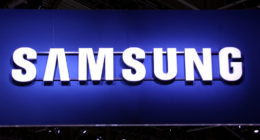September is here, and for Apple fans, that means just one thing – new iPhones. Contrary to last year, the Cupertino-based tech giant held the iPhone launch event during its usual September launch window. And it would be fair to say that Apple’s “California Streaming” lived up to the hype. So without further ado, let’s talk about iPhone 13.
That’s right, the newest generation of Apple’s flagship product has finally been unveiled, and comes with a massively powerful processor, hardware upgrades, and iOS 15. There are four smartphones in the iPhone 13 generation (just like its predecessor iPhone 12) – the iPhone 13, iPhone 13 Mini, iPhone 13 Pro, and iPhone 13 Pro Max. The final two have stainless steel bands.
“With industry-leading performance and the world’s most advanced camera systems, and with privacy built-in, we keep making iPhone better,” said Apple CEO Tim Cook, and he (and Apple) have delivered.
Starting from the top (quite literally) the iPhone 13 series features a much smaller display notch (20%) than its predecessor. As someone who has been put off by the large notch on almost all iPhones since the launch of the iPhone X, this is a huge step in the right direction. The smaller notch will lead to more immersion-something that has pushed many, including me, to choose competitors like Samsung. However, the notch is still present, and thus, if you were looking for a full bezel-less display, you would be disappointed.
The phones are powered by the all-new A15 Bionic chipset, which has a six-core CPU with two high performance and four efficiency cores.
As for the display, the iPhone 13 mini sports a 5.4-inch display, the iPhone 13 and iPhone 13 Pro have a 6.1-inch display each, while the iPhone 13 Pro Max has a 6.7-inch display. And finally, a couple of years after its competitors, Apple has decided to empower its phones with higher refresh rates. The iPhone 13 Pro and iPhone 13 Pro Max will come with 120 Hz displays, something that fans have been asking for years. The iPhone 13’s display is 28% brighter, up to 800 nits, and for HDR content, the peak brightness is higher at 1200 nits.
The phones will also come with a ceramic shield front on the glass and IP68 water resistance, improving on iPhone’s durability.
Additionally, the iPhone 13 has a new look for its camera systems, with the cameras positioned diagonally. The 12MP wide camera gathers 40% more light for less noise and better results in photos and videos and is enabled by a larger sensor. The cameras include the custom-designed new ultra-wide camera that will reveal more of the dark areas with less noise. As for the video, the phone has the all-new Cinematic mode, which brings rack focus-like visuals from movies to the iPhone and tracks the focus of a moving subject automatically. It shoots in Dolby Vision HDR.
As for the iPhone Pro, it has a newly designed front with a 20% smaller TrueDepth camera system and includes a new 77m telephoto camera with 3x optical zoom, a larger aperture on the ultra-wide camera, and a large sensor on the new wide camera. In fact, the new ultra-wide lens design and autofocus system will let you take macro-like photos, enable macro slow-motion videos, and will include the telephoto and have night mode. Additionally, Apple is working on a way to personalize your iPhone camera with photographic styles – you can customize the styles further, and the styles work across scenes and subject types.
Both the iPhone 13 Pro and the iPhone 13 Pro Max will be completely redesigned inside to support a new display, bigger battery, and improved camera system.
There are provisions for longer battery life as well – the battery of the iPhone 13 and the iPhone 13 MIni last 2.5 hours and 1.5 hours respectively longer than the battery of the iPhone 12. Similarly, the iPhone 13 Pro and iPhone 13 Pro Max last 1.5 hours and 2.5 hours longer than the iPhone 12 Pro series.
As for its storage, the iPhone series starts from 128GB and goes up to 1TB. While the iPhone 13 and iPhone 13 mini will have storage options of 128GB, 256GB, and 512GB, the iPhone 13 Pro, and the iPhone 13 Pro Max will have options of 128GB, 256GB, 512GB, and the largest of them all, 1TB. This is a significant step-up from the iPhone 12 series, which maxed at 512GB for the iPhone 12 Pro Max and 256GB for the iPhone 12 and iPhone 12 mini.
What are the color options, you ask? While the iPhone 13 and iPhone 13 mini will be available in Black, Blue, Pink, Purple, Red, and White color options, the iPhone 13 Pro comes in graphite, gold, silver, and all-new blue, and iPhone 13 Pro Max will come in Black, Bronze, Gold, and Silver. So you have a wide range of colors to choose from.
All of these features are intended to make iPhone 13 future-proof, and ensure that the Apple device that you buy today lasts you a long time. Add the fact that Apple is also looking to double 5G support to over 200 carriers in 60 countries and regions, and you have a strong product.
The prices are as follows – the iPhone 13 comes at $799, the iPhone 13 Mini costs $699, the iPhone 13 Pro comes at $999, while the iPhone 13 Pro Max costs $1,099. You can pre-order them from Friday, and they will be made available from September 24.





